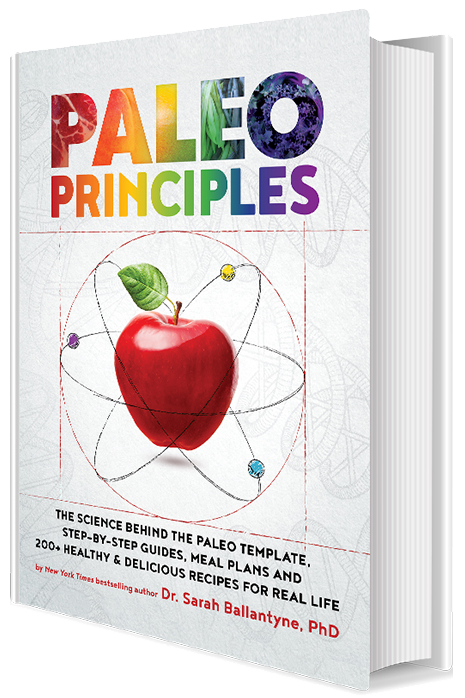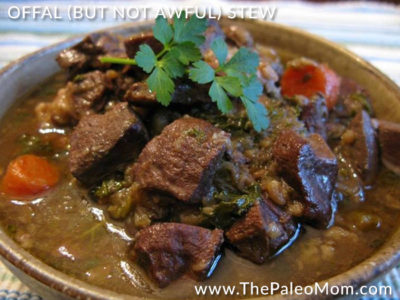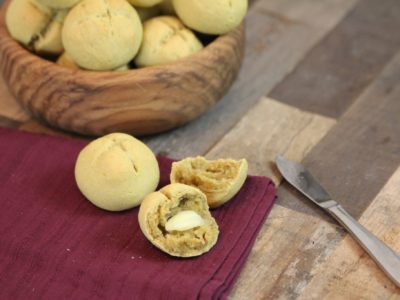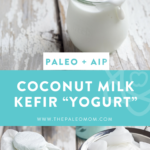I have been making my own coconut milk Kefir for quite a while now. But recently, I began to crave the thicker creamier consistency of yogurt. So, I did some experimenting. Coconut milk yogurt is very easy to make (almost as easy as coconut milk kefir, but perhaps not quite so forgiving). Empty a can of full-fat Coconut Milk
(or equivalent volume of homemade coconut milk) into a 1 pint mason jar. Heat to 115F (that is exactly 1 minute with my microwave). Many recipes suggest heating to 180F first and then letting it cool to 115, which I don’t bother doing because I’m either using freshly made coconut milk which is still warm or canned Coconut Milk. Next, add 1 Tbsp of store-bought coconut milk yogurt (I used plain So Delicious coconut milk yogurt that I bought at Whole Foods). You could also use a non-dairy yogurt starter or a spoon of regular yogurt. Either way, for future batches, just use 1 Tbsp of the previously made batch of yogurt. Place in a warm place for 8-24 hours (I put mine into my oven, off but with the oven light on, ideally it should incubate between 105F-112F; you can also use crock-pots, food dehydrators or yogurt makers). It produced a lovely tasting sour yogurt. However, much to my dismay, coconut milk yogurt does not thicken on its own(it doesn’t have the right proteins).
Every recipe I found online either used thickeners or suggested straining the yogurt afterward. So, once again, I experimented. I tried thickening with pectin, but didn’t like the fact that I had to add honey or sugar to the coconut milk in order for this to work (even with pectin designed for no sugar added applications) and pectin without added preservatives are hard to find. Also, I felt that it changed the taste (maybe it was the preservatives). I tried thickening with Gelatin
(I actually like the idea of adding those great gelatin amino acids to my food), but really disliked the texture it created (more like jello than yogurt). Last, I tried straining my homemade yogurt through a folded piece of Cheesecloth
. Success! The result is creamy yogurty goodness. But, then I got thinking. Given all the extra work it is to make yogurt compared to the kefir I was already culturing, couldn’t I just strain the kefir? The answer was yes! Plus, kefir is richer in diverse probiotics compared to yogurt, so it’s even better for you. Best of all, using kefir as a starting point compared to yogurt is much more fool proof and controllable. (I have tried to give you enough details here to culture yogurt instead of kefir if you happen to have yogurt starter or a yogurt maker in your home that you are dying to use. The straining steps are the same.)
I bought my starter Kefir Grains from amazon (you also might be able to find them in your local health food store). Following the directions from the manufacturer and from Mark’s Daily Apple, I initially got my kefir grains going with organic whole cow’s milk. They grew in a glass mason jar in ½ cup of milk and a folded piece of cheesecloth held over the top with the ring part of the lid (an elastic band and a piece of paper towel or coffee filter work too). I changed the grains by pouring the milk through a metal sieve and then dumping the Kefir Grains
into a clean glass jar with fresh milk. I changed the milk daily for 5 consecutive days and then I just dumped those little kefir grains into half a can of Coconut Milk
and let them go for 48 hours. It worked! The result was a sour, tangy, and very pleasant beverage which I liked to pour over a bowl of fresh berries. Initially I used light coconut milk (it’s just so temptingly cheap at Trader Joe’s but it really can’t compete with full-fat coconut milk so I don’t buy it anymore). I enjoyed the beverage even more when I moved to homemade coconut milk or full-fat canned coconut milk. And my kefir grains started growing much faster once I started growing them in the full-fat milk. My grains have more than quadrupled in size since I bought them about three months ago (I now have some dormant kefir grains sitting in cow’s milk in my fridge) and they can ferment a can of coconut milk to the very sour that I enjoy in 24 hours or 2 cans in 48 hours (I like to do the latter since it’s less work). Please note that if you want to make yogurt without the use of thickeners like pectin or gelatin, you need the fat content of either homemade or full-fat canned coconut milk to get that creamy texture.
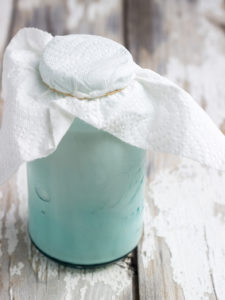 Straining coconut milk kefir is very easy. If you don’t want to invest in a Yogurt Cheese Strainer
Straining coconut milk kefir is very easy. If you don’t want to invest in a Yogurt Cheese Strainer or a Kefir Cheese Strainer
, you can simply use a clean linen tea towel, a square of muslin or about 12-14 layers of Cheesecloth
lining a metal sieve. All of them work. What does not work is a nut-milk bag or a paint straining bag because the weave is just too big. I have typically been using cheesecloth but just ordered myself a Yogurt Cheese Strainer
, which I’m very excited about because it will be more sustainable. When my kefir is ready (you can test simply by tasting it and see if it’s yummy), I first pour the culture through a metal sieve to catch the kefir grains for the next batch (if I have a lot of curd, I gently push it through the metal strainer with a rubber spatula to separate out the kefir grains). Then I pour the kefir sans grains into whatever straining method I am using suspended over a bowl to catch the whey. I then place it in the fridge (if you strain at room temperature, it will continue to get more sour and end up more like a fresh cheese than a yogurt). It takes 1-12 hours to drain enough of the whey to make the thick, creamy yogurt that I prefer, depending on exactly what strainer I’m using (linen takes the longest, close to 24 hours with canned coconut milk, and cheesecloth takes less time, 1-2 hours with homemade coconut milk) and depending on whether I’m using canned Coconut Milk
(takes longer due to the guar gum content) or homemade coconut milk (separates more easily, sometimes the curd is so thick you can even skip the straining step, see note at bottom of recipe). When it’s done, I use the whey for smoothies and scrape that yogurt into a jar and store in the fridge until I’m ready to eat it.

What I like about making yogurt this way is that, even though it takes a couple of days to make, it’s actually very little work. It’s nearly fool-proof since kefir is so easy to grow. And it’s completely controllable. You can culture your kefir for as little as 6 hours or as much as 48 (or even 72!) depending on how sour you like it. You can strain a little of the whey out or alot depending on how thick you want your yogurt. I sometimes even strain my yogurt overnight because even if I strain too much whey and end up with cream cheese consistency instead of yogurt consistency, I can always just stir a little of the whey back in until it’s as thick as I want it! What I love most about this yogurt is that there are no additives (especially if you use homemade coconut milk or a guar gum-free canned Coconut Milk) and no added sugar! And once you have plain yogurt, you can flavor it any way you want! Feel free to experiment with other methods out there (I like the recipes from here and here). Really, coconut milk yogurt is pretty easy to make no matter how you do it. But, this way is by far my favorite. So, if you don’t have enough details to get started already, here is my recipe:
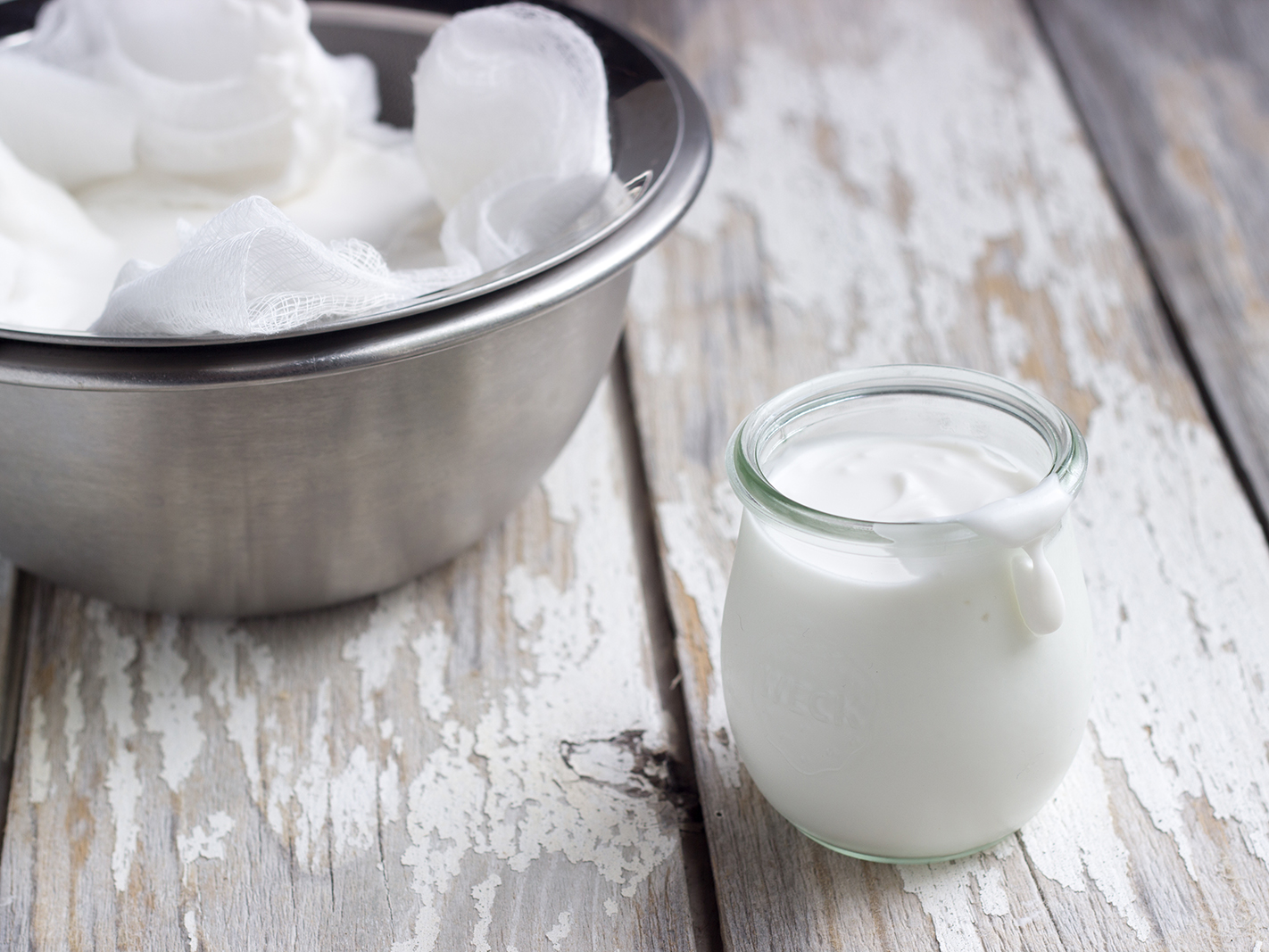
Coconut Milk Kefir “Yogurt”
Prep
Inactive
Total
Yield 1 cup
Ingredients
- Milk Kefir Grains
- 1 can full-fat Coconut Milk or a double batch of Homemade Coconut Milk
- A glass jar or two
- Metal Sieve
- One of the following: Cheesecloth, muslin, linen, Yogurt Cheese Strainer.
Instructions
1. Place room temperature coconut milk into a glass jar. Add kefir grains. Cover with paper towel or cheesecloth secured with the ring of a mason jar lid or an elastic band.
2. Let the kefir grains do their thing for 24-48 hours (tasting periodically to see if the culture has reached your desired sourness).
3. Strain the kefir culture through a metal strainer. Place the strained kefir grains into fresh milk to start the next culture.
4. Line a metal sieve, colander or funnel with 12-14 layer thick cheesecloth (alternately you could use a yogurt cheese bag, a kefir strainer, a piece of muslin cloth or a clean linen tea towel). Place sieve over a medium-sized bowl to catch the whey.
5. Pour strained kefir culture into the cheesecloth-lined sieve and place the entire bowl and sieve into the refrigerator. After 1 hour, check the liquid in the bottom of the bowl and make sure that it is mostly clear (it will have a little opaque white swirling around in it, but it should look a lot like the liquidy whey from the top of a yogurt container). If it isn’t clear, dump it back into the cheese cloth and add another few layers of cheese cloth or a second nut-milk bag or even a coffee filter to strain out the whey.
6. Check how thick your yogurt is after about 4 hours. It will take anywhere between 4-24 hours to strain enough whey to have thick, creamy yogurt consistency (you can actually continue straining to make a fresh kefir cheese, although if you are going to attempt this, it’s better to strain at room temperature). Once the desired consistency is reached, scrape the yogurt into a bowl or container for storage and discard the whey (or better yet, use for another purpose). The yield is approximately 1 cup of yogurt for 1 can of coconut milk.
7. Enjoy the yogurt plain (maybe with some berries or Paleo granola) or flavor with honey, vanilla and/or pureed fruit. To make a lovely vanilla yogurt, add 1 Tbsp honey and 1 tsp alcohol-free vanilla extract. For fruit yogurts, I typically add ¼ cup pureed fresh or frozen fruit to 1 cup of yogurt. Stir to incorporate and enjoy!
Note on straining kefir when using homemade coconut milk: The curd/fat layer of my kefir can be so solid when I use homemade coconut milk that the straining step can be avoided. Instead, I carefully spoon the thick top layer into my metal sieve, and push the curd through to separate out my Kefir Grains for the next batch. If the curd is really thick, I might even thin a bit with the whey that naturally separates out to the bottom (I always save this whey for smoothies). If the yogurt has a bit of a curdled texture (this can happen in a cooler kitchen), a quick blend in a blender will smooth it out. So, not only is homemade kefir “yogurt” cheaper and better tasting when made with homemade coconut milk, but it’s easier too!


